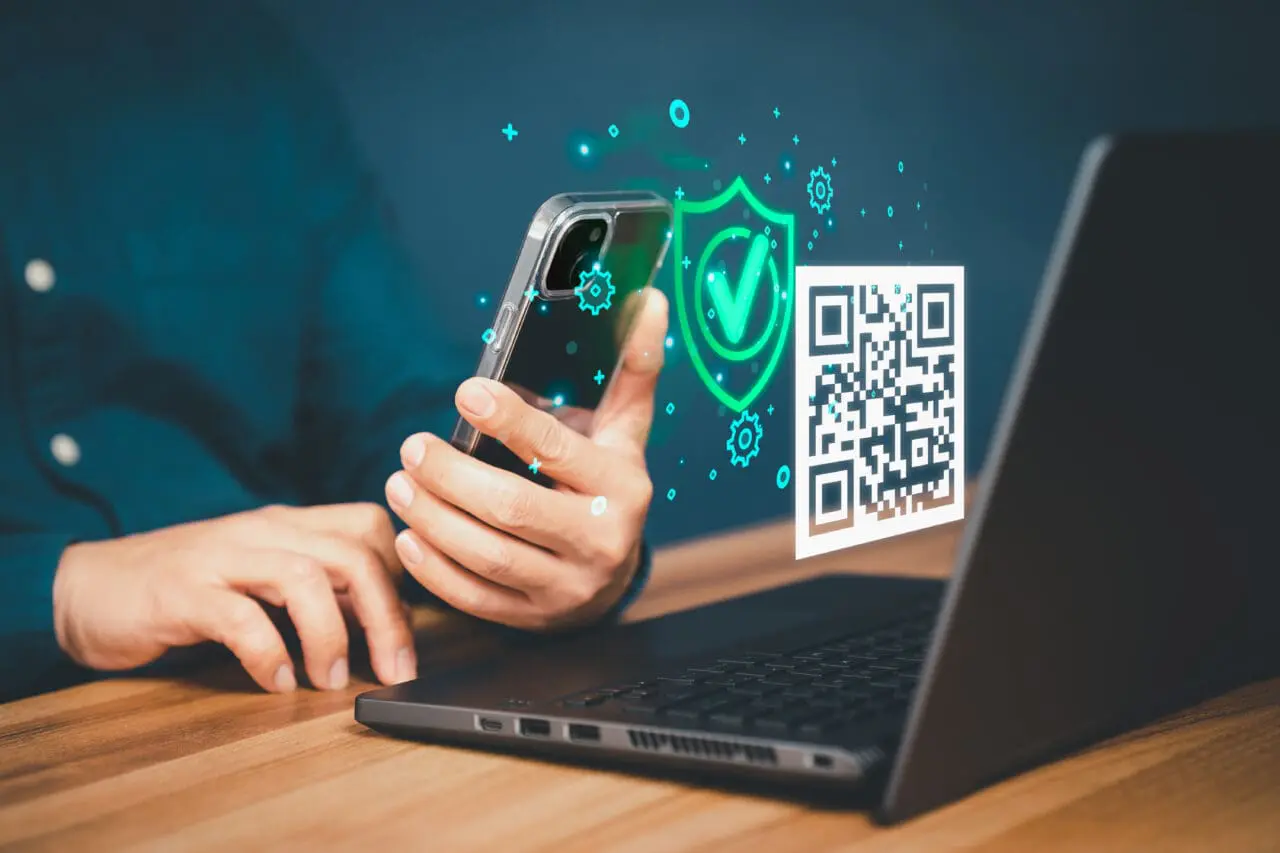From Industry Tool to Ubiquitous Interface
In 1994, Denso Wave—a Japanese company affiliated with Toyota—introduced the QR code, a two-dimensional matrix barcode designed for the fast and accurate scanning of automotive parts. Unlike one-dimensional UPC barcodes, which were limited in data and scan angle, the QR code offered higher capacity, error correction, and omnidirectional readability.
Over time, QR code usage transitioned from factory floors and logistics systems into everyday life, appearing on buses, signs, event tickets, business cards, and more. Its ability to embed URLs, contact info, Wi‑Fi credentials, and text into a compact format made it perfect for bridging physical and digital worlds—a practice known as “hardlinking.”
How It Works
A standard QR code contains black squares on a white background, featuring three distinctive corner markers—called finder patterns—that guide scanners. Inside lies encoded data: numeric, alphanumeric, byte, or even Kanji characters. These codes range from small (21×21 modules) to large (177×177 modules), with error correction ensuring readability even if parts are obscured
Thanks to Reed–Solomon error correction, a QR code can still be scanned accurately even if 30% is damaged or obstructed—one reason why people sometimes embed logos within them.
Scanning Today
Modern smartphones come with built-in QR scanners in their native camera apps—Android 8+ and iOS 11+ support this natively. To scan, simply point your camera at a QR code; a pop-up link appears, and tapping it directs you to the encoded destination. For saved images, tools like Google Lens or Apple’s Live Text enable on‑photo scanning.
That ease of use led to widespread adoption across industries—from cafés and hotels to transport hubs.
Benefits and Use Cases
- Marketing & Engagement
Marketers love QR codes for adding interactivity to print materials—menus, brochures, posters, packaging—without cluttering them. A single scan can open rich media, feedback forms, coupons, or product info - Digital Menus & Dining
Restaurants introduced QR-coded menus during the COVID‑19 pandemic to minimize contact. Many kept them after realizing their potential to streamline orders, reduce staff workload, and improve customer experiences - Product Information & Traceability
Retail brands like L’Oréal and Coca‑Cola are embedding QR codes alongside traditional barcodes to offer interactive features, like virtual try‑ons, nutrition facts, and sustainability stories - Payment and Transactions
In countries like China and India, QR-based mobile payments are mainstream, with solutions like Alipay gaining a foothold since 2011. In Europe, standardized QR payment systems (like EPC QR Code) are enabling SEPA transfers
Static vs. Dynamic QR Codes
- Static QR codes embed fixed information—like URLs or text—that cannot be changed post-generation. They’re free and do not expire
- Dynamic QR codes, however, allow post-print editing of the embedded link/contents and provide analytics like scan location and frequency. These also typically use short, redirectable links and are included in subscription plans.
Tools to Generate QR Codes
There are several free and premium QR generators:
- QR Code Generator (by Bitly): Offers static and dynamic codes, customization options (color, frames, logos), tracking, and API integration
- QRCode Monkey: A free tool emphasizing high-resolution vector downloads and logo embedding, handling static codes only
- The-Qrcode-generator.com: Provides both static and a limited number of free dynamic codes, with design flexibility
- Adobe Express, Canva, and QRfy: Offer user-friendly environments to create and style QR codes for free .
Security and Precautions
Despite convenience, QR codes pose security risks. Malicious actors can overlay a fake QR code sticker on legitimate surfaces (e.g., parking meters) to redirect users to phishing sites. There have been multiple incidents, such as fake parking meter codes in Málagacadenaser.com, and earlier attacks in Austin and Boston
Best practices include:
- Inspect physical codes—avoid tampered or layered stickers.
- Preview URLs before tapping.
- Use trusted scanners and rely on browser protection.
- Be cautious with unknown codes in public places.
The Road Ahead: Retail Revolution
Retailers plan to transition product packaging from UPC barcodes to QR codes by 2027. GS1’s “Sunrise 2027” initiative aims to make QR codes a standard at checkout—enabling scan-at-point-of-sale, richer info displays, and direct engagement on packaging the-qrcode-generator.comwsj.com. While infrastructure upgrades and consumer education remain challenges, the shift could transform supply chain transparency and customer interaction.
Final Thoughts on the QR code
The QR code remains a dynamic, versatile tool, evolving from a factory logistics aid into a universal portal connecting physical world touchpoints to digital experiences. Features like customization, dynamic editing, tracking, and increased retail adoption solidify its role in modern marketing, commerce, and daily life. Yet, vigilance against misuse is essential, especially in public environments. As brands, venues, and governments increasingly integrate QR codes, user familiarity and informed scanning habits will be key to maximizing the benefits and minimizing the risks.



